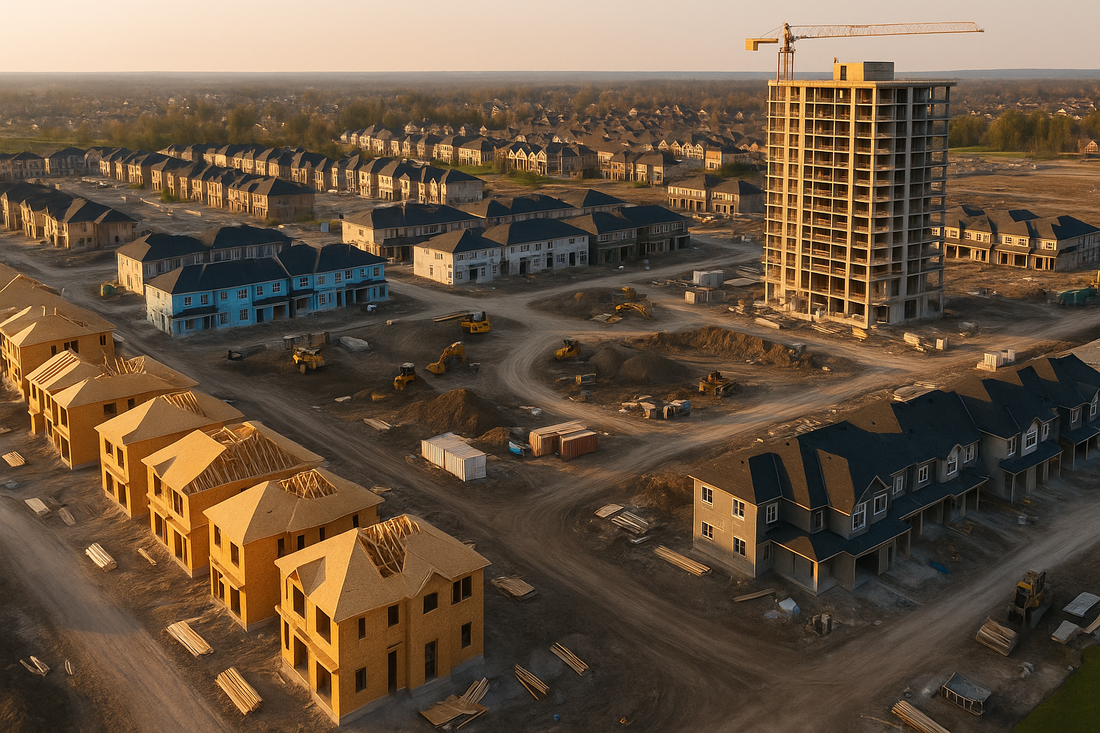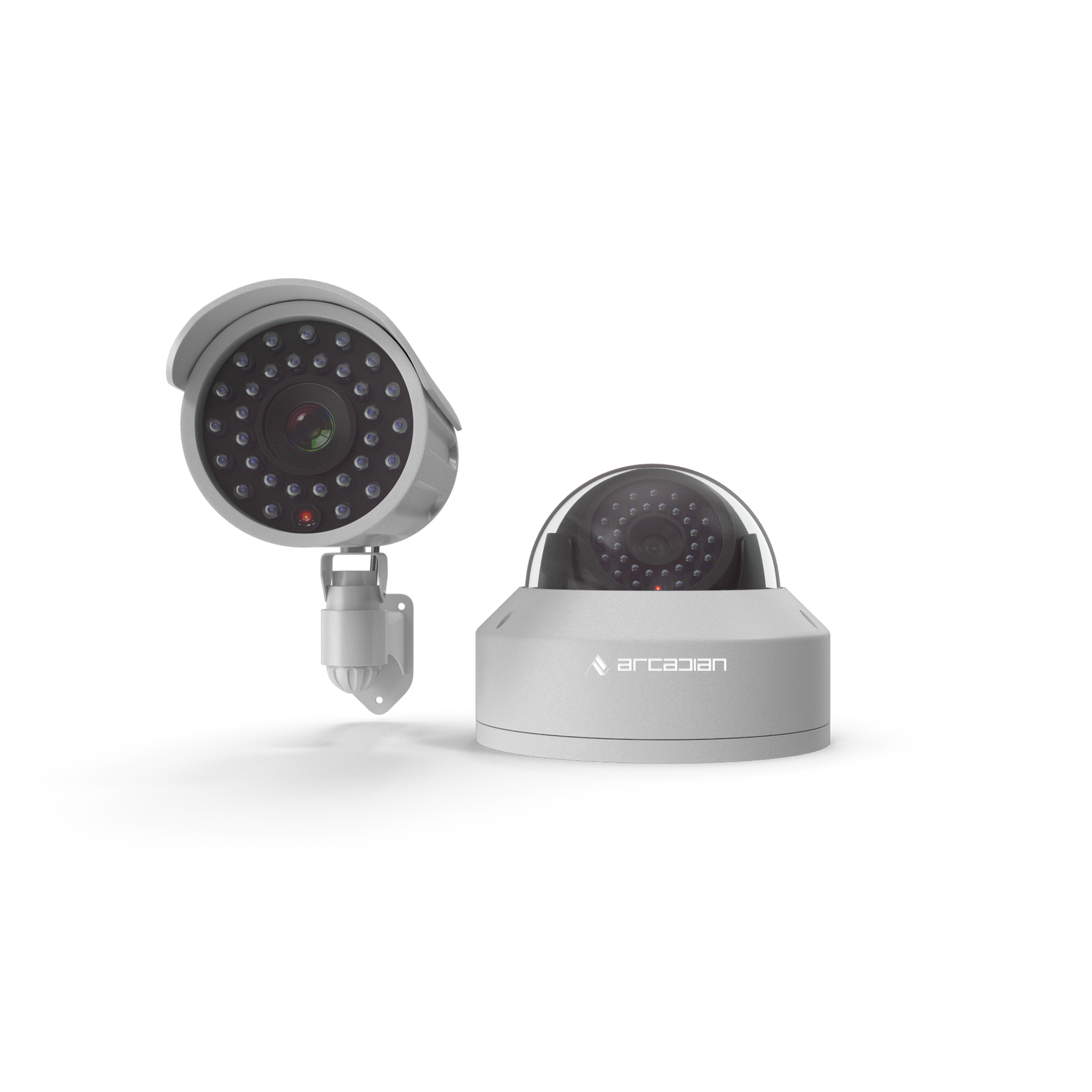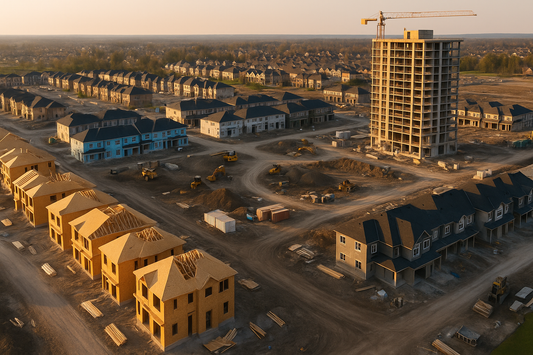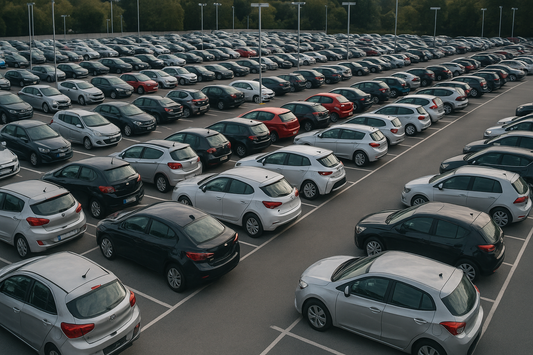Mobile CCTV for Tough Sites in 2025: How to Stop Theft, Cut False Alarms, and Make Monitoring Profitable
Mobile surveillance towers promise “security anywhere,” but power, connectivity, and false alarms can turn them into expensive light poles. Here’s the reality on the ground—and how ArcadianAI + Ranger helps monitoring and guard companies turn trailers into profit engines.

Introduction
Construction and oil & gas executives love to brag about the shiny new solar-powered CCTV trailer they just leased. It’s tall, it’s visible, it’s got cameras, speakers, and strobes. On paper, it feels like “instant security, anywhere.”
But here’s the dark truth: many of these units become little more than expensive parking lot ornaments. Why? Because the challenges of power, communication, and false alarms don’t disappear once you bolt a mast onto a trailer.
-
The National Equipment Register estimates annual U.S. construction site theft between $300 million and $1 billion—not counting project delays, rental costs, and penalties that can double or triple the loss .
-
The DOJ and COPS Office cite false alarm rates of 94–98% across the industry . That means nearly every alarm that a guard company or monitoring station receives from a mobile unit is a waste of human time and police resources.
-
Meanwhile, insurance payouts are getting harder. Many carriers (Travelers, Zurich, Marsh) now require video-verified evidence before honoring claims for theft at temporary or remote sites.
Companies like LVT (LiveView Technologies), WCCTV, Zedcor, Pro-Vigil, and Stealth/ECAM have invested heavily in mobile surveillance fleets. They promise coverage, but they don’t solve the problem of false alarms, dead links, and operational chaos.
ArcadianAI’s Ranger was built to fix this gap: providing monitoring companies and guard providers with power-aware AI, multi-path connectivity, and false-alarm suppression that makes mobile CCTV truly profitable.
Quick Summary / Key Takeaways
-
Power, backhaul, and false alarms decide trailer ROI.
-
94–98% of alarms are false without validation.
-
AVS-01 scoring + AI cuts dispatches and costs.
-
Starlink/LTE hybrid backhaul stabilizes remote sites.
-
Ranger reduces noise and unifies monitoring workflows.
Background & Relevance
Why is mobile CCTV suddenly booming?
-
Construction boom — Global construction spending is projected to hit $15.5 trillion by 2030【Statista】. With more cranes, trucks, and copper on-site, theft opportunities multiply.
-
Energy transition — Oil, gas, and renewables sites are expanding across remote deserts, forests, and coasts, with no permanent infrastructure.
-
Insurance pressure — Carriers now demand video verification or won’t cover losses. Many are pushing contractors to adopt remote video monitoring as a condition of coverage.
-
Law enforcement fatigue — With 98% false alarm rates, many police agencies won’t prioritize unverified trailer alarms. The new TMA AVS-01 (2024) scoring standard formalizes this: only human-verified alarms get urgent dispatch.
-
Connectivity shifts — LTE/5G alone isn’t enough. Starlink Mini and hybrid satellite-cellular backhaul are rapidly becoming the standard for greenfield deployments.
In short: the world needs mobile CCTV, but the execution gap between trailers and actual site security is massive.
Core Topic Exploration
Power: The Weak Link Nobody Talks About
Executives love to assume that solar panels equal “free power forever.” But on a real construction site:
-
Panels get shaded by cranes, dirtied by dust, or covered by snow.
-
Winter insolation in northern regions cuts solar yield by 40–60%.
-
PTZ cameras, IR illuminators, and heaters can draw 10–30W each, spiking consumption at night.
-
Lead-acid batteries degrade fast; LiFePO₄ helps, but still struggles in extreme cold.
Some vendors like Mobile Pro Systems and WCCTV build hybrid towers with solar + generator + shore power. But every genset run adds fuel cost, emissions, and noise.
ArcadianAI’s Ranger reduces compute load during low SOC (state of charge), prioritizing human/vehicle detection while suspending low-value analytics. That means fewer generator cycles, longer battery life, and less service cost.
Connectivity: When LTE Isn’t Enough
A single LTE modem is a single point of failure. Congestion, tower maintenance, or geography can kill streams right when a theft occurs.
-
Multi-SIM bonding (AT&T, Verizon, T-Mobile) improves odds but doesn’t guarantee uptime.
-
Starlink Mini + LTE hybrid is proving itself at remote pads and construction camps.
-
Some vendors (e.g., Zedcor, LVT) are now experimenting with satellite backup, but many fleets still rely on cellular alone.
Ranger’s multi-path logic chooses LTE first, fails over to satellite, and queues event clips until delivery is guaranteed. That ensures monitoring centers don’t lose evidentiary video at the worst moment.
False Alarms: The 98% Problem
Without validation, mobile CCTV is just a false-alarm factory. Common triggers:
-
Swaying plastic mesh fences.
-
Headlights or shadows across the lot.
-
Wind-blown debris.
-
Animals crossing perimeters.
Operators at monitoring stations burn out fast when 98 out of 100 alarms are false. Police stop responding. Clients stop trusting the service.
ArcadianAI Ranger solves this with:
-
Contextual AI — analyzing not just motion, but presence (human, vehicle, fire, collapse).
-
AVS-01 scoring — embedding validation scores into alerts for dispatch priority.
-
Environmental awareness — using light/weather data to downscore nuisance triggers.
Monitoring Overload: SOC Fatigue
Every mobile tower brand has its own portal. Add in Immix, SureView, or custom VMS platforms, and operators are juggling tabs and duplicate alarms.
Ranger integrates directly with Immix workflows: verified alerts, health pings, and evidence clips flow into existing playbooks. No extra dashboards. No duplication.
ROI: The Hidden Costs
For monitoring and guard companies, mobile CCTV only works if it adds margin per unit. Hidden costs eat that margin:
-
Fuel runs for gensets.
-
Truck rolls to reset connectivity.
-
Operator overtime from false alarms.
-
Client churn when alarms are noisy or video is missing.
Ranger reduces these leaks, making fleets more profitable to operate.
Comparisons & Use Cases
Vendor Landscape
| Vendor | Strengths | Weaknesses | Fleet Focus |
|---|---|---|---|
| LVT | Strong deterrent presence; Axon ecosystem | High rental cost, reliance on LTE | Retail, parking lots |
| WCCTV | Solar/thermal options, UK pedigree | Still LTE-first | Construction, utilities |
| Zedcor | Low/zero-emission towers; in-house monitoring | Limited U.S. reach | Oil, gas, construction |
| Pro-Vigil | Audio deterrence, construction expertise | False alarm challenges | Construction |
| Stealth/ECAM | Scale in monitoring | Portal sprawl | Mixed |
| Eagle Eye | Cloud-native VMS | Dependent on partner hardware | Multi-vertical |
Use Case: Construction Site Theft
A Toronto contractor lost $150,000 in copper in a single weekend. The site had a mobile CCTV trailer, but footage was unavailable due to a dead LTE link. The insurer denied the claim.
With Ranger:
-
Multi-path connectivity would have kept video flowing.
-
AVS-01 alerts would have prioritized dispatch.
-
Evidence chain would have satisfied insurer.
Use Case: Oil & Gas Pad
An Alberta oil pad deployed towers from two vendors. Operators received hundreds of alarms nightly, almost all false.
With Ranger’s suppression layer, alerts dropped 80%, and operator handle time per incident halved. Client satisfaction rose, and dispatches were cut in half.
Use Case: Temporary Events
Music festivals often deploy rental towers. The challenge? Crowd motion triggers everything.
Ranger can filter for after-hours trespass vs during-event motion, adapting context rules to time windows. That means alarms only trigger when they matter.
FAQ
Q1: How do we cut false alarms at windy, dark sites?
By using AI human/vehicle presence detection, AVS-01 scoring, and environmental awareness, instead of raw motion.
Q2: What’s the best backhaul for remote pads?
A hybrid model: LTE/5G for primary, Starlink for failover.
Q3: Do thermal cameras help?
Yes—thermal cuts through glare and darkness, improving human detection range.
Q4: How big is the theft problem?
Construction theft in the U.S. is estimated at $300M–$1B+ annually, with downtime pushing losses even higher.
Q5: Will Ranger work with our SOC stack?
Yes—Immix integration routes verified events into existing workflows.
Conclusion & CTA
Mobile CCTV can be either a profit engine or a false-alarm nightmare.
If you want towers that drain fuel, flood your operators with noise, and frustrate clients—stick with the old way.
If you want validated events, stable uptime, and insurer-ready evidence, then it’s time to add Ranger.
See ArcadianAI in Action → Get Demo – ArcadianAI
Visual Placeholders
-
[IMAGE: Mobile CCTV trailer at a construction site at dusk – realistic, 16:9 – alt="Solar-hybrid mobile surveillance tower securing an active construction site"]
-
[IMAGE: Oil & gas pad with thermal camera overlay – realistic, 16:9 – alt="Thermal + AI detection reducing false alarms at remote oil & gas site"]
-
[IMAGE: SOC operator viewing AVS-scored alerts – realistic, 16:9 – alt="Monitoring center dashboard showing AVS-01 scores and AI-verified events"]
Security Glossary (2025 Edition)
AVS-01 (Alarm Validation Scoring) — 2024 TMA standard that classifies alarms by credibility, enabling better dispatch.
Backhaul — The network link (LTE/5G, satellite, fiber) that carries video and alerts.
Bonded LTE/5G — Multiple cellular links combined to increase reliability.
False Alarm Rate — Industry average: 94–98% of alarms are false without validation.
Hybrid Power — Solar + battery + generator systems used in mobile trailers.
Immix — Leading video monitoring integration platform for SOCs.
LPR (License Plate Recognition) — AI-based plate reading for investigations.
Mobile CCTV Tower/Trailer — Rapid-deploy mast with cameras, lights, and network for temporary security.
NDAA Compliance — Restriction on non-compliant video gear in U.S. projects.
ONVIF — Standard for IP video device interoperability.
Ranger (ArcadianAI) — Cloud-native AI that filters noise and routes AVS-scored events into SOC platforms.
Remote Video Monitoring (RVM) — Off-site monitoring with AI + human operators.
Satellite Backhaul (Starlink) — Low-Earth orbit satellite internet for remote sites.
SOC (Security Operations Center) — Centralized alarm handling and dispatch facility.
Thermal Imaging — Infrared video detecting heat signatures, effective in dark or glare.
Verified Video Alarm — Alert with human evidence (clip/snapshot) to support priority dispatch.
VSaaS (Video Surveillance as a Service) — Cloud-based video storage and analytics.
Visual Camera Health — Immix feature checking camera field-of-view and availability.
Zedcor — Canadian provider of mobile surveillance towers with zero-emission models.
WCCTV — UK/US vendor specializing in solar and thermal mobile towers.
LVT (LiveView Technologies) — U.S. vendor of high-visibility deterrent towers, integrated with Axon.
Pro-Vigil — U.S. monitoring company specializing in construction security with mobile towers.
Stealth Monitoring — North American live video monitoring provider, merged with ECAMSECURE.

Security is like insurance—until you need it, you don’t think about it.
But when something goes wrong? Break-ins, theft, liability claims—suddenly, it’s all you think about.
ArcadianAI upgrades your security to the AI era—no new hardware, no sky-high costs, just smart protection that works.
→ Stop security incidents before they happen
→ Cut security costs without cutting corners
→ Run your business without the worry
Because the best security isn’t reactive—it’s proactive.







